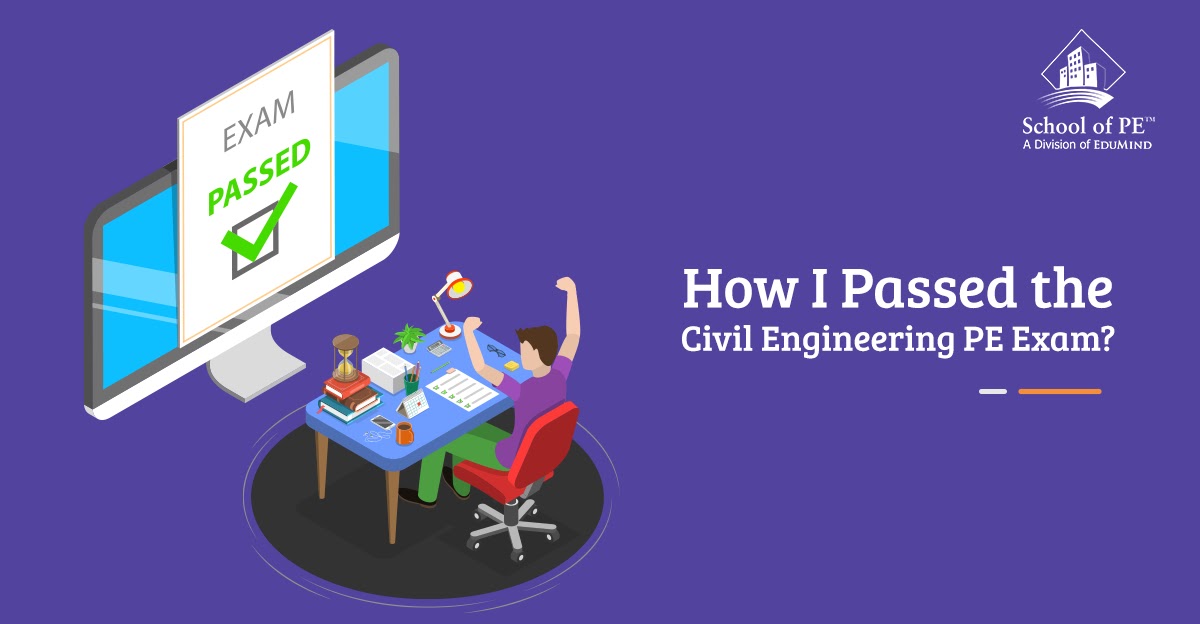There are many different and successful strategies for passing the Civil Engineering PE exam, and a key part in success is finding the best strategy for you. Below, I will walk you through how I passed the PE exam.
I am a Civil Engineer working in the public sector. My job focuses on roadway and bridge improvement projects. In the state I work and at the time I took the exam, I was required to submit an application to the state licensing board prior to being approved to take the PE exam. The application was to prove I met the minimum requirements of a Professional Engineer and included proof of a Civil Engineering bachelor's degree and passing the FE exam, a list of projects I worked on, engineering duties performed, and references from direct supervisors. The application took approximately one month to complete (including signatures from current and past supervisors) and had to be approved by the state prior to registering for the exam. I submitted the application as early as the state would allow for two reasons: I wanted to make sure I could revise the application in time to register for the exam if needed, and I wanted to take the PE exam as close to graduating college as possible. This was very important to me, as there are many things covered on the PE exam which I hadn't studied since college.
My next step was to select a depth section of the PE exam. The PE exam consists of two sections: a breadth section which covers all facets of civil engineering at a high level, and a depth section which covers one discipline of civil engineering at a more detailed level. Because my work is primarily project management of transportation projects (both design and construction), I selected Transportation for my depth section. It is worth noting that the reference material for each depth section is different. Since the test is open book (with restrictions), the amount of reference material plays a role in studying and taking the exam. I took about 15 reference books in with me to the PE exam.

Once I had successfully registered for the PE exam, I began researching review courses. My job and family life largely dictated which format of review course I eventually selected. I decided on the School of PE OnDemand review course, consisting of recorded sessions of the previous test's live online review course. There are also in-person courses which work well for many people.
I gathered the reference books I would need for studying and taking the exam and blocked out between one and two hours each morning before work to study. Studying included watching prep course videos, reading through reference material, and taking practice exams. I took three practice exams (one each Saturday) in the weeks leading up to the exam.
At the exam, I used a system taught by one of the School of PE instructors to prioritize test questions. I quickly read each question and ranked the questions from 1 to 4, 1 being the quickest to answer and 4 being the longest. I then answered all the #1 questions, then 2, 3 and 4. This allowed me to get the most points early while saving the harder questions for the end, when I may run out of time. Unfortunately, I did run out of time. In both the breadth and depth sections of the test, there were two or three questions I didn't have time to fully answer. Fortunately, they were harder questions which I may not have answered correctly anyway.
People use many different strategies when studying for and taking the PE exam. These strategies played to my personal strengths (learning by instruction rather than reading, taking notes, etc.). The most important strategy is the one that works for you.
No comments :
Post a Comment